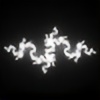HOME | DD
 Tam3n — IR2
Tam3n — IR2

#infrared #ir
Published: 2017-05-12 08:45:43 +0000 UTC; Views: 192; Favourites: 16; Downloads: 0
Redirect to original
Description
Testing infrared photography ^_^Camera: Full spectrum a5000
Lens: Samyang 12 mm f2
Filter: Cheap Chinese 720nm IR filter
Related content
Comments: 9

How you like the edge quality when using a wide angle Rokinon like that and infrared filtered?
Seems like wides tend to diffract/fuzz out especially at the edge much sooner when it comes to infrared light.
Like with my Olympus 12mm f/2.0 doesn't go onto my 590nm IR E-M1 that often because the quality is lowered. Whereas the Panasonic 20mm f/1.7 makes an excellent lens with infrared light.
Far as using 720nm (or even nicer, finding a 695nm filter like a B+W 092), try throwing a circular polarizer in the front and mess with scenes of sky/water in that respect. It's more prominent on a 695nm filter as you got tiny bit more visible light to work with for the polarizer (not all polarizers have an impact on infrared light, more to do with the filter spiking near the end, and less about IR itself).
👍: 0 ⏩: 1

Hi! The edges are definitely softer with the IR filter and also the lens has some problems with a center hot spot. I can edit the hot spot mostly away in post though. I got a couple of other lenses that seem to work well with IR, but they are far from wide angle.
👍: 0 ⏩: 1

Yea the Olympus 12mm f/2.0 has a hot spot too, though not quite as harsh as some of the other lens. But as you said when it's even/subtle enough you can usually fix it in post.
Though I noticed that when using a wider lens, conversion behind the lens (ie: sensor) seems to work better than filters in front since light bending becomes a bit less 'straight' at that point.
I doubt you could get too much wider than 12mm without hurting the IQ significantly. For example my Olympus 9mm f/8 tends to work quite wonderfully for what it is, and it only has three focusing points (less than half a foot, half a foot to infinity and infinity).
But on an infrared converted camera even 590nm (ie: "Super color" is what Life Pixel calls, it, or when you put a R25 or B+W 090 in front of a full spectrum camera), the image is immediately overall softened as if the focus is way off. I suspect however it's more to do with the f/8 fixed aperture than the focus distance, since infrared light diffracts much sooner than visible light on lens designed primarily for visible light (hence why keeping it around f/5.6 or faster works best for overall quality).
Example with the 9mm and why I don't use it much on the IR : i.imgur.com/KX8MpZ3.jpg
👍: 0 ⏩: 1

Yeah, I don't have much experience with IR yet, but I have shot most of my shots at f5-f8. Large apertures like f2 work, but the corners are even more soft then. After f8 the overall sharpness starts to suffer, and the hot spot gets more concentrated and harder to remove at the middle. There's also plenty of vignetting, which I blame the filter, because it gets noticeable darker when you look at it in an angle. But it's very easy to correct in post and not a problem.
Here's the full size image, you can clearly see the soft corners:
I got an idea to try and remove radial blur in photoshop, and the result is not too bad. I might use this in the future:
👍: 0 ⏩: 1

The A5000 is an APS-C sensor, so the larger sensor probably allows for f/8 to work decently well, compared to micro-4/3rd where I avoid going above 5.6 unless it's on a normal unmodified visible light camera.
What I find helps is shooting in raw mode, and if available using lens profiles in adobe camera raw (assuming there is a profile, or a similar lens that corrects for it), which can help in regards to vignetting and to some degree distortion.
I also sometimes expose to the right of the histogram, as I found on some cameras, metering does work, but sometimes you have to meter for around +0.7 or +1.0 to avoid underexposure as it's not factoring in the infrared side of the light.
👍: 0 ⏩: 1

Yeah the sensor size might have something to do with it, but I'd guess part of it is also the lens (even though the hard diffraction limit does not depend on the lens). Also, if you use a filter that passes some of the shorter wavelengths, it results in a wider spectrum of light which does not all focus at the same spot.
I haven't done any extensive testing, the sharpness probably drops a bit even before f8, but it really only gets noticeable after that. I think that at least f10 should be usable for a bit softer look though. I always shoot raw 
I'm going to go test my Sigma 30 1.4 outside, it looks like it behaves surprisingly nicely with IR.
👍: 0 ⏩: 0

not bad for a test shot! like the subtle colours.. cheers, rob
👍: 0 ⏩: 1

Thanks, I like how it turned out. This is taken just close to the backyard, I wanted to see how the water there looks like
👍: 0 ⏩: 0



















